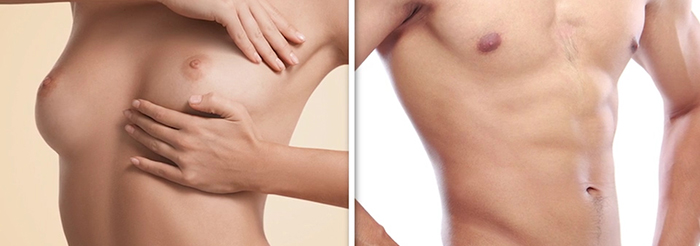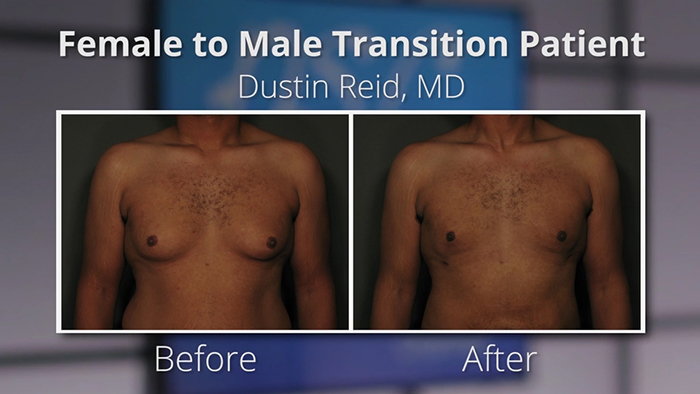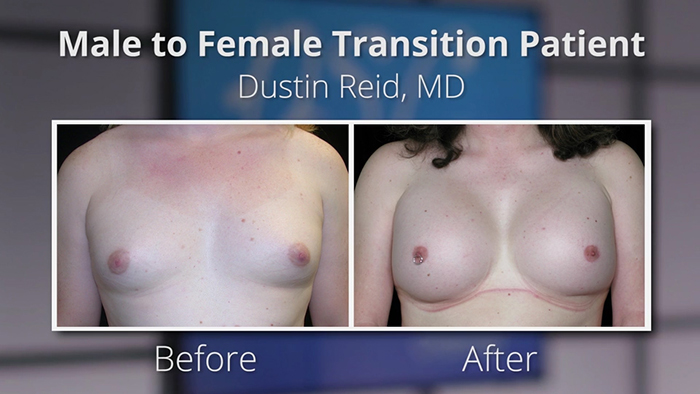In today’s world, awareness regarding the many challenges transgender individuals face is on the rise. Gender-affirming surgery is one aspect of the transition process.
Austin plastic surgeon Dr. Dustin Reid is excited to be on the forefront of the transgender plastic surgery movement. “I feel like it’s an issue whose time has come,” he says. “This group of patients has suffered so much throughout their lives. I want to help these patients make the change.”
Top Surgery by a Top Surgeon
Dr. Reid specializes in what is referred to as top surgery. Top procedures involve the transition from a male chest to a female chest, or the transition from a female chest to a male chest.
Obvious differences between male and female chests begin with volume – but they don’t end there. “There is an absolute difference in the positioning and size of the nipple and the areola in a male and female,” explains Reid.

Transgender patients also face unique challenges due to the expectations that exist for the results after surgery. “You can get fantastic results with these patients, but you really need to sit down and explain what the limitations are for each individual,” says Reid. “Some people can’t have the exact result that they’ve seen online in another patient who is completely different anatomically than them.”
Female to Male
For patients transitioning to male, techniques used during surgery depend on the the amount of breast tissue and the amount of breast skin. In the case of a small breasted patient, liposuction may be used to reduce the volume. In larger breasted patients, longer incisions will be required to remove both tissue and skin.
“Essentially, in that procedure, we’re performing a mastectomy: we’re removing all of the breast tissue and the skin associated with that breast. The scar can range from a small scar to a scar that goes along the lower aspect of their breast,” describes Reid.

Due to nipple differences from female to male, a secondary procedure to move and/or resize the nipple is often combined with the mastectomy. “The male areola is usually much smaller than the female areola,” says Reid. “The nipple and areola is usually centrally positioned in the female breast, and that’s part of what gives a feminine appearance to a breast. The masculine appearance to the nipple and areola is actually lower and more to the sides, just at the edge of the pectoralis muscle.”
Male to Female
Patients transitioning from male to female undergo breast augmentation. The challenge facing surgeons lies in the selection of an implant to fit a chest that is typically broader with a stronger pectoralis muscle. To provide a more natural result, Dr. Reid often relies on an implant with more forward projection to offset the wider measurements.

“Depending on how long they have undergone hormonal treatment and lived as a female, sometimes the pectoralis muscle is not as strong, but case-per-case we probably need more projection in the implant that we choose to get the result that they want,” says Reid.
Changing Lives with Surgery
Surgical procedures are usually one of the latter steps for transgender patients. After months and perhaps even years of hormonal and mental therapy, surgeons assess whether candidates are capable of proceeding with a physical alteration that will ultimately achieve what they’ve struggled with for so long.
















Facebook
Twitter
Instagram
YouTube
RSS